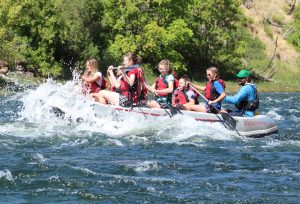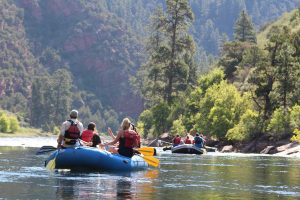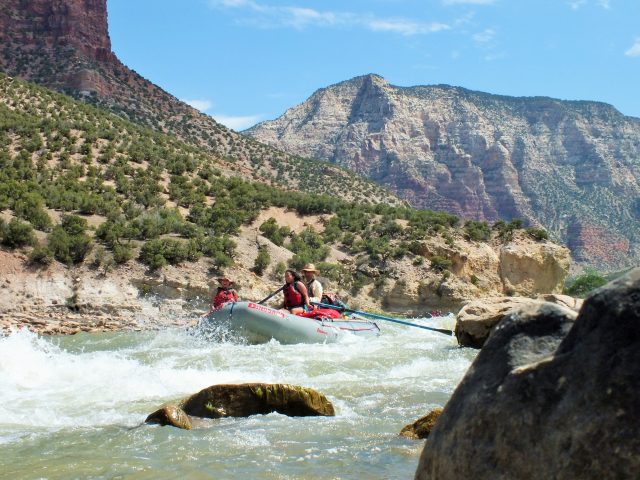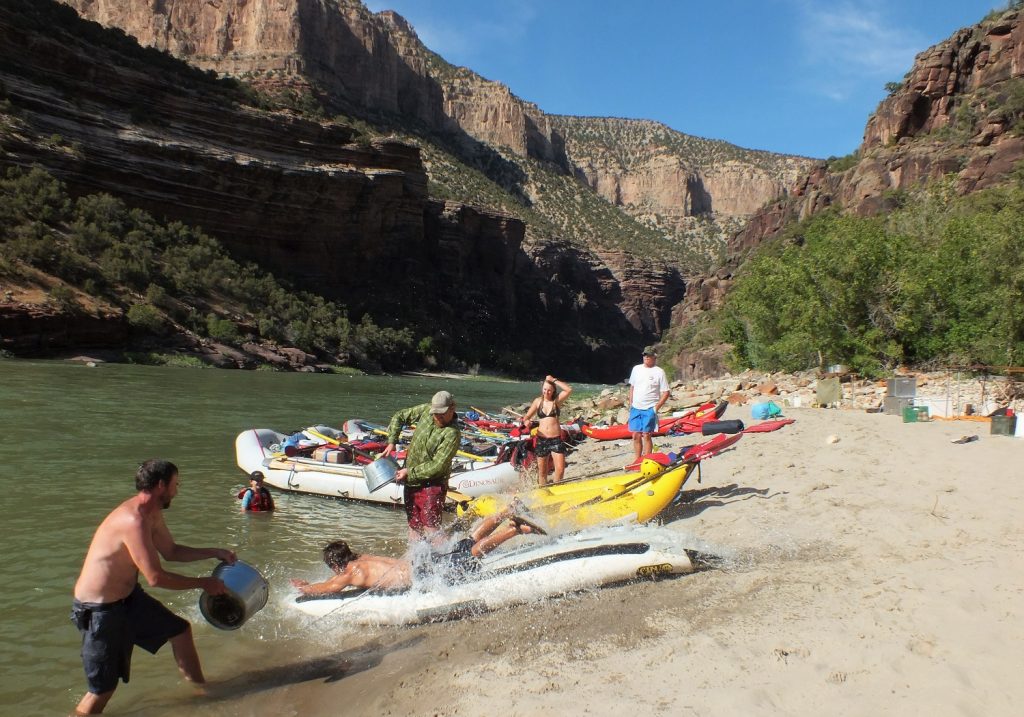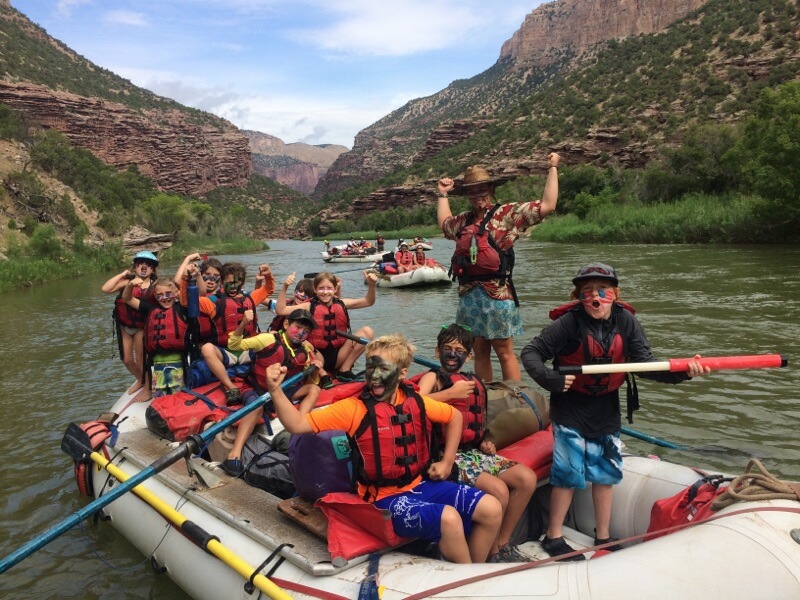Mantle’s Cave on Colorado’s Yampa River
The Yampa River starts high in the Rocky Mountains of Colorado, with its headwater originating at roughly 11,000 feet the river snakes it way 250 miles across northwestern Colorado. The Yampa River watershed encompasses approximately 8,000 square miles in Colorado and Wyoming. The river eventually meets the border of Dinosaur National Monument and the Deer Lodge boat ramp where our 4 and 5-day Yampa River adventures begin.
A trip on the Yampa River has to many exciting things to see and do along the journey. One of the highlights of the trip is a great side hike to Mantles Cave. This cave is not only scenic but a very important part of early human history. Mantle’s Cave is a large rock shelter about 400 feet above the Yampa River in the Castle Park area, and a short hike from the rafts. The cave is named for Charles and Evelyn Mantle, who ranched in the area and discovered the cave and its archeological treasures sometime in the early 1900’s.
The cave is only accessible by a rafting trip down the Yampa River and is well protected within the boundaries of Dinosaur National Monument. The cave was listed on the National Register of Historic Places in 1994.
In 1933 the first archaeological excavations of the cave occurred. The Penrose – Taylor Expeditions from Colorado College mapped the cave, uncovered basketry, corn, squash and pottery.
The University of Colorado Museum visited the cave in 1939 and 1940 where they performed extensive excavations. They uncovered storage pits and a wide variety of artifacts throughout the site.
The Fremont culture who used the area left artifacts typical of prehistoric sites found throughout the southwest. Items like stone tools, chipped stone flakes, Manos or a stone used for grinding and a small amount of grayware pottery.
Food items found in Mantles Cave included dried and pulverized insects, grass seeds, pinyon nuts, squash and pumpkin rinds, beans and corncobs. These items give archaeologists an indication that the Fremont both gathered and cultivated plant foods.
The Fremont also hunted and used a wide range of hunting techniques determined by the finds of fishhooks, arrow points and wooden arrow shafts along with snares and nets. This region of Colorado has a large population of elk, mule deer, small game and birds. Hunting would have been key to survival. The Yampa River itself is home to a large variety of fish species and the native people would have been skilled at catching these fish.
Clothing items found in the cave included buckskin sandals or moccasins, rabbit-fur cloth and a juniper-bark robe. The most incredible find was a bag of ceremonial items. A headdress made of flicker feathers, lined with ermine fur along with slate beads, a blade made of quartzite, feather bundles and a butterfly pendant.
Mantle’s Cave is very important in identifying the Fremont culture. Artifacts found within the cave have dates ranging from 500 AD to 1255 AD. In addition, artifacts from the late Archaic period is represented in the cave with dates ranging from 1770 to 1400 BC.
A trip on the Yampa River is a once in a lifetime experience and Mantles Cave is only one of many wonderful things to see and do along the journey.
